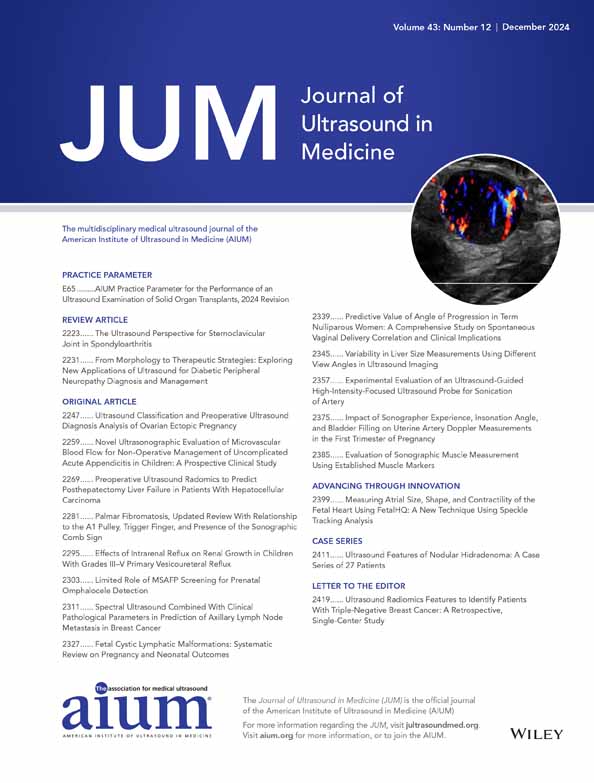Spectral Ultrasound Combined With Clinical Pathological Parameters in Prediction of Axillary Lymph Node Metastasis in Breast Cancer
Pengfei Sun and Jiaqi Han contributed equally to this work.
This work was supported by the Capital's Funds for Health Improvement and Research (No. 2022-4-1105) to Pengfei Sun, and National Natural Science Foundation of China (62371027, 61901021) to Jianguo Ma. We express our sincere gratitude to the patients who participated in this study.
Abstract
Objectives
To explore the clinical value of the nomogram based on spectral Doppler ultrasound combined with clinical pathological parameter in predicting axillary lymph node metastasis in breast cancer.
Methods
We prospectively gathered clinicopathologic and ultrasonic data from 240 patients confirmed breast cancer. The risk factors of axillary lymph node metastasis were analyzed by univariate and multivariate logistic regression, and the prediction model was established. The model calibration, predictive ability, and diagnostic efficiency in the training set and the testing set were analyzed by receiver operating characteristic curve and calibration curve analysis, respectively.
Results
Univariate analysis showed that lymph node metastasis was related with tumor size, Ki-67, axillary ultrasound, ultrasound spectral quantitative parameter, internal echo, and calcification (P < .05). Multivariate logistic regression analysis showed that the Ki-67, axillary ultrasound, quantitative parameter (the mean of the mid-band fit in tumor and posterior tumor) were independent risk factors of axillary lymph node metastasis (P < .05). The models developed using Ki-67, axillary ultrasound, and quantitative parameters for predicting axillary lymph node metastasis demonstrated an area under the receiver operating characteristic curve of 0.83. Additionally, the prediction model exhibited outstanding predictability for axillary lymph node metastasis, as evidenced by a Harrell C-index of 0.83 (95% confidence interval 0.73–0.93).
Conclusion
Axillary ultrasound combined with Ki-67 and spectral ultrasound parameters has the potential to predict axillary lymph node metastasis in breast cancer, which is superior to axillary ultrasound alone.
Open Research
Data Availability Statement
The data that support the findings of this study are available on request from the corresponding author. The data are not publicly available due to privacy or ethical restrictions.




